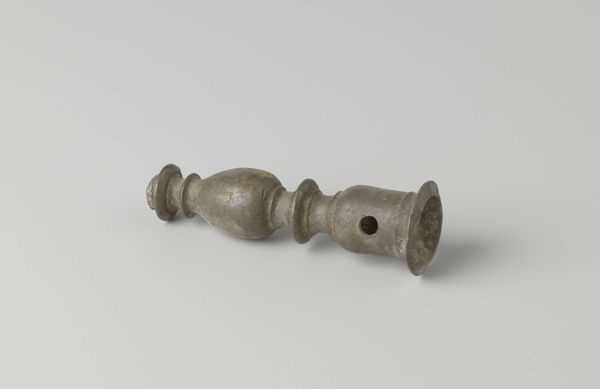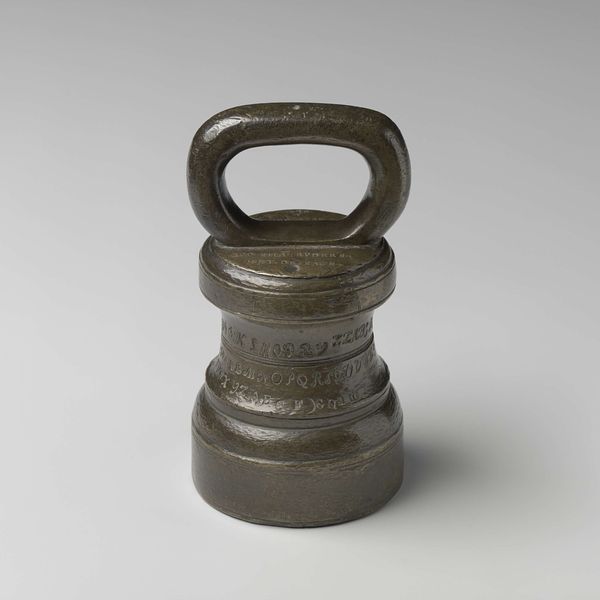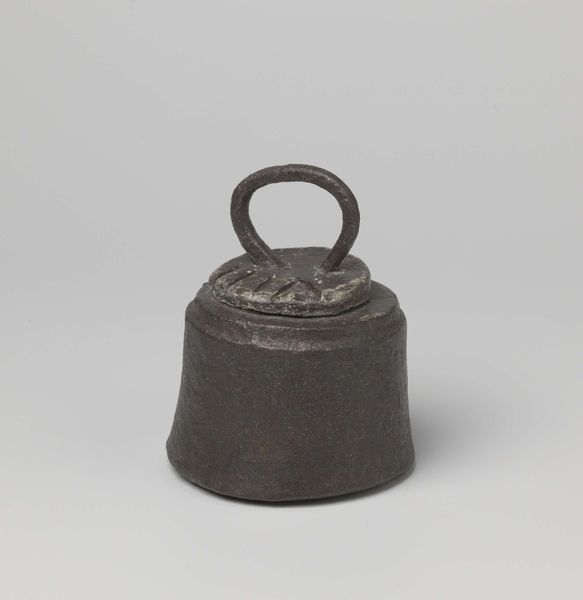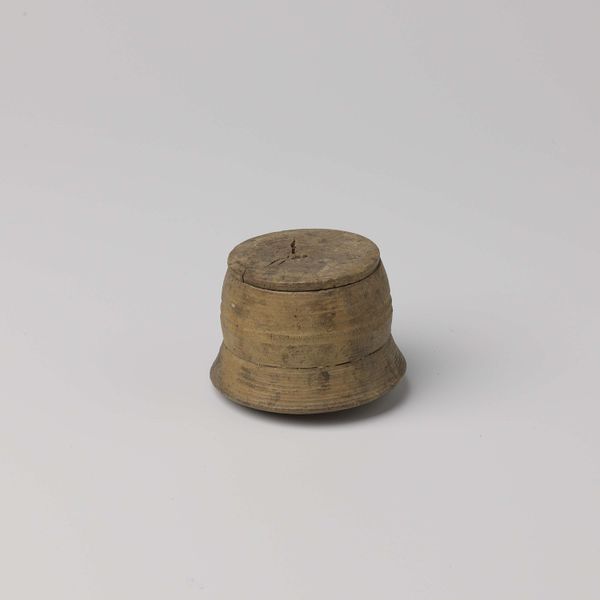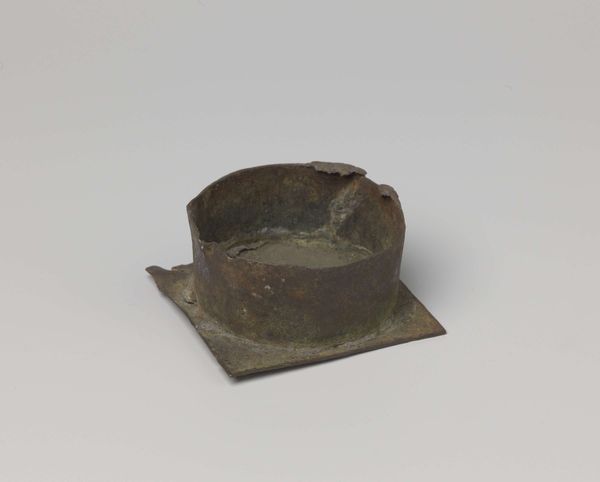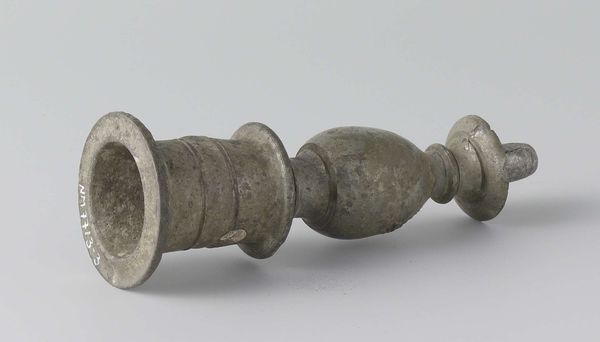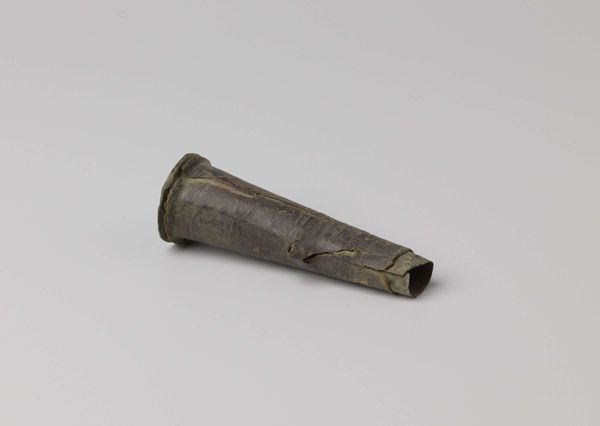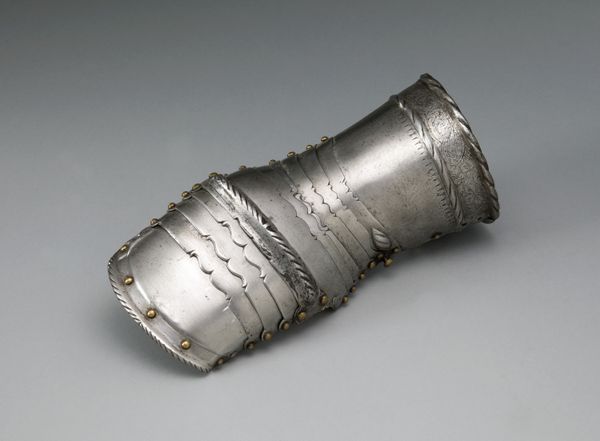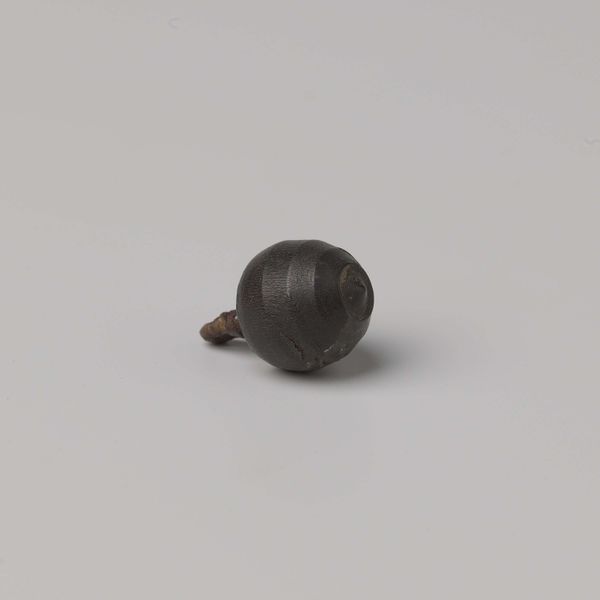
assemblage, metal, sculpture
#
assemblage
#
metal
#
sculpture
Dimensions: height 5.9 cm, diameter 3.2 cm
Copyright: Rijks Museum: Open Domain
Curator: Let's take a closer look at this object. It's called "Schroefsluiting van fles, fragment," or "Screw Cap of Bottle, Fragment," and dates back to somewhere between 1590 and 1596. The Rijksmuseum attributes it to an anonymous maker. Editor: It looks strangely beautiful, despite being broken. The aged metal has a quiet dignity. What strikes me is how functional yet crafted it is, especially that ring—clearly intended for frequent handling. Curator: Function is indeed key. In this period, personal possessions—even mundane ones—reflected social status and networks of trade. This fragment offers a small glimpse into daily life through the lens of production and availability of commodities at the time. Editor: Absolutely. I find myself thinking about the craftsperson who made it, how the ring may have been forged by a local artisan. The kind of labour and resources needed, even for a fragment, challenges the contemporary idea of mass production and planned obsolescence. Curator: Furthermore, one might consider the socioeconomic factors driving such forms of creation. Metal objects held symbolic and monetary value. The cap implies access to goods stored in bottles – perhaps spices or medicines - which signal not only wealth but a growing colonial infrastructure facilitating trade. Editor: Good point! It encourages us to ask: where were those materials coming from? What kind of human effort underpinned their journey across land and sea, and the technologies that gave rise to bottle making and metalworking? The residue of daily life. Curator: A beautiful memento indeed, sparking a profound appreciation for art and design that transcends trends. Editor: It shows us the intricate relationship between objects, labor, and global networks across the expanse of time.
Comments
No comments
Be the first to comment and join the conversation on the ultimate creative platform.
